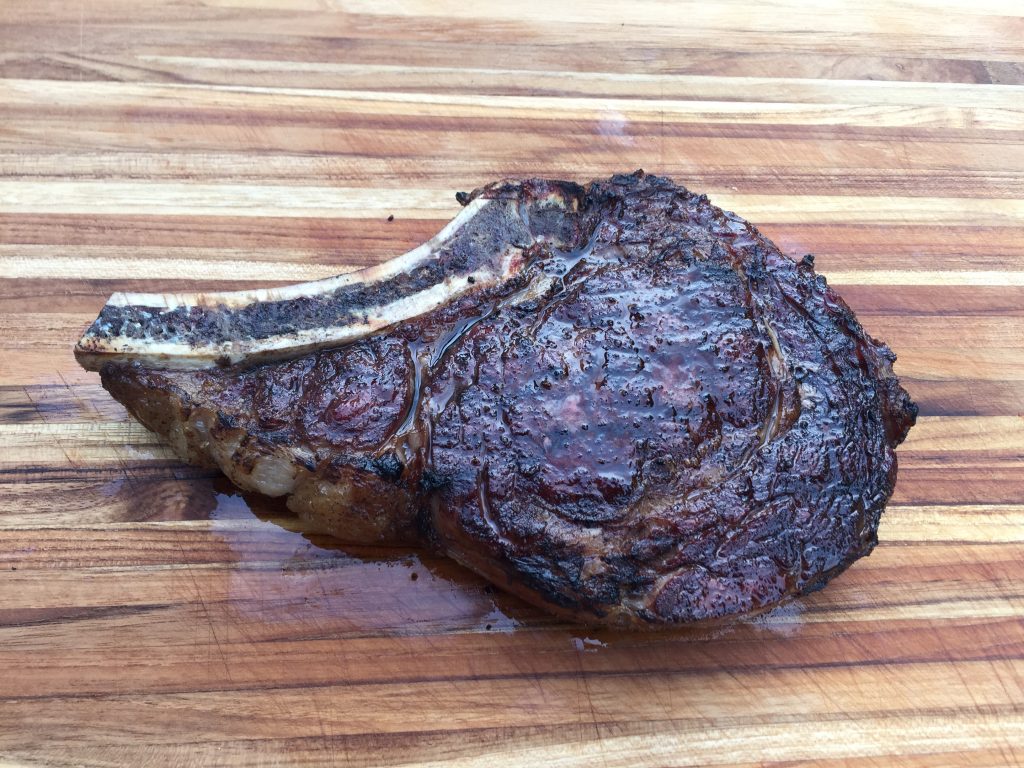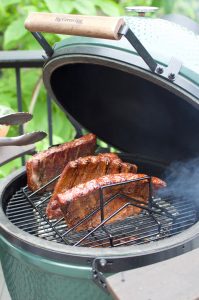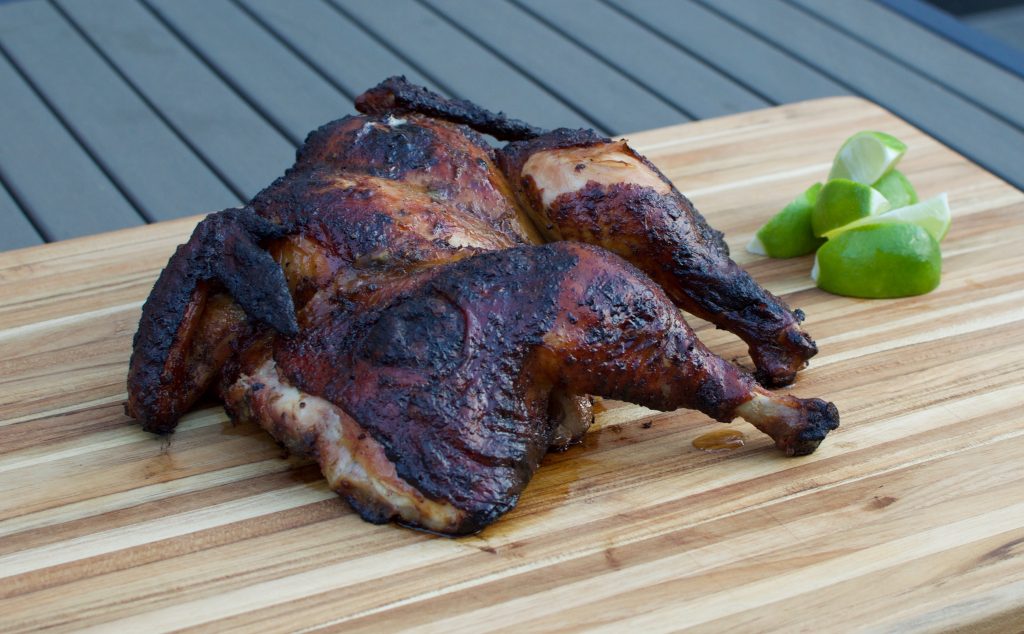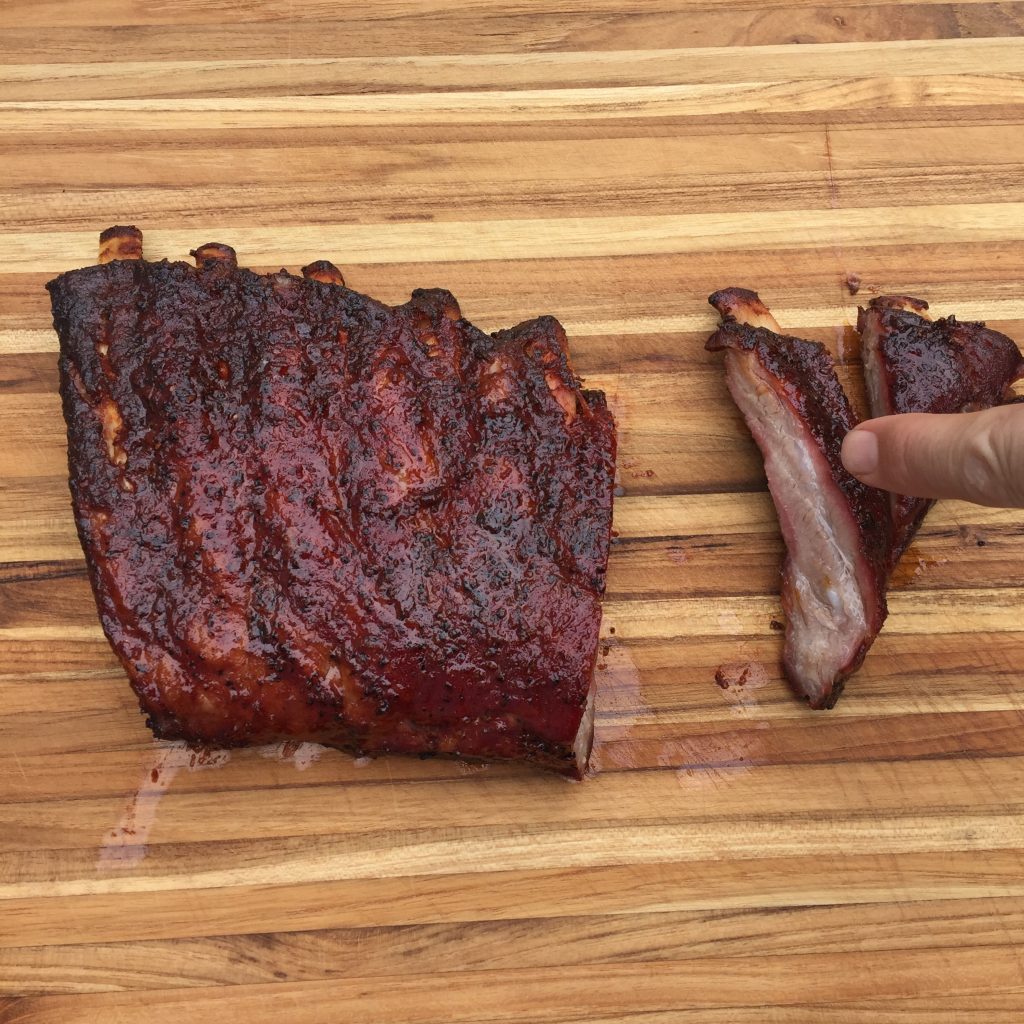A collection of beer pictures, yum.
Category: Food & Drink
July 4th BBQ
To celebrate Independence Day, we served pulled pork–as tacos.
Here are the recipes, and some notes…
Meat
This was a much smaller piece of meat than I’ve cooked in the past–about 4.5 pounds and boneless. I followed the same instructions from past cooks, for the most part. I didn’t inject, and I forgot to add more rub before cooking. It was tasty, but I think the larger, bone-in ones were slightly moister and more flavorful. Not sure if this is because they are larger, or they have the bone, or both. The cooking temperature was very steady around 250º for the entire time, and it took about 9 hours to get to 195º internal temperature. I’m going to up my timing calculation to 2 hours per pound next time, to be safe.
Sides etc.
Roberto Santibañez’s Truly Mexican is the go-to book for Mexican cooking around here, and provided these delicous recipes
- Fresh Corn Tortillas
- Pico de Gallo go easy on the salt next time
- Classic Guacamole the chili/onion paste method here is great, could up the spice level next time
- Chipotle and Roasted Garlic Salsa
The Smashed Potato Salad with Chorizo, Aioli, and Scallions was a winner.
I also over grilled some zucchini, not a winner.
Dessert
Ribeye Steak

Reverse searing steaks produces great results. I think they are superior to sous vide when it comes to flavor, especially when cooking indirectly with charcoal.
With Kenji’s reverse sear method as a (very detailed) guideline, here is what I do on the Green Egg:
- Get the butcher to cut a steak at about 1 1/2 – 1 3/4 inches (most of the precut ones seem to be an inch or less, these tend to overcook before developing a good char)
- Set up for an indirect cook and preheat to a relatively stable temperature between 200 – 250º
- Put a thermometer in the center of the steak and place on the grate
- Cook to 115º internal temperature (for medium rare, see Kenji’s guide for other temperatures), keep the dome temperature under 250º. This will take around 20 to 30 minutes.
- When steak reaches desired temperature, remove steak and the plate setter. Put the grate back in the egg and get the dome temperature up to about 600º. Getting the egg to temperature might take 10 minutes or so.
- Once the fire is blazing, cook the steak for 45 seconds on each side to develop a nice crust. Check the internal temperature, I’m looking for 125 – 130º (for medium rare)
- Cut, if needed, and serve
This process take a bit more time than just grilling the steak, but it’s worth it.
Gochujang Ribs
Update 2020-07-05: Here’s an updated recipe with some delicious tweaks.
 I’ve cooked these gochujang ribs couple times. They’ve always been delicious, but I’m really trying to nail down the technique here.
I’ve cooked these gochujang ribs couple times. They’ve always been delicious, but I’m really trying to nail down the technique here.
The recipe is from the NY Times. As before, I went light on the rub. I might try tweaking that recipe next time by reducing the salt. I don’t have enough rub on these to create any sort of crust. The ribs were left overnight in the fridge. An hour or so before they went on, I put them in the freezer to cool them more in an effort to encourage a smoke ring.
The heat was indirect and I made a custom drip pan out of tin foil to keep the grease from dripping into the fire. For smoke, two large and three little chunks of cherry wood were used. The lid was closed for two hours so that the ribs have some time to get smoke on them. After that, I glazed them every hour. There was no glaze immediately before serving as they had a nice lacquer. I also skipped the peanut and scallion garnish, it looks nice, but I don’t think those extra flavors are needed.
The results were very flavorful and tender. The smoke ring was one of the better ones I’ve produced on the Green Egg. In the future, I think it would be good to let these rest for 10 or 20 minutes before serving. They seem to be more tender and the smoke flavor comes through after they’ve cooled a bit.
Photos by Angela Lin
Thai-Style Grilled Chicken (Gai Yang)

This weekend is Eggiversary here–one year since the Green Egg arrived! To celebrate, we are cooking delicious foods. Last night was Thai-Style Grilled Chicken.
We used Milk Street’s Chiang Mai Chicken recipe for the marinade together with Serious Eats Thai-Style Sweet Chili Dipping Sauce. There were a couple minor modifications to the dipping sauce. We substituted serrano peppers as there were no red Thai bird chilies available, and we reduced the sugar to 1/4 cup. Do not over marinate this one, 1 1/2 hours was great, more than 2 hours would be overpowering.
The last time we cooked this, it was directly over the coals. The skin side was cooked for about 15 minutes, then the bird was flipped and cooked until done. This time, we decided to cook it the more (traditional?) way with indirect heat. It was skin side up, indirect at a temperature of between 425º and 450º. Initially the legs were closer to the hot spot, but I turned it around towards the end since the breasts needed a bit more cooking.
The verdict? Delicious.
Notes for next time: Use the same indirect cooking method, but keep the temperature closer to 400º, especially if it’s a larger bird. This should give it some more time to cook through without over-browning the skin.
Photo by Angela Lin
